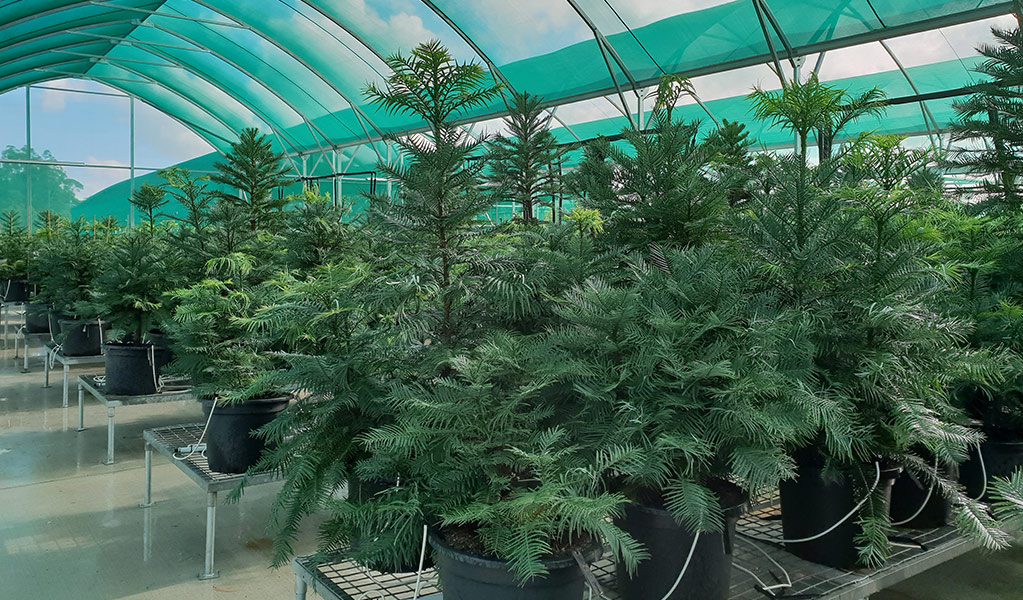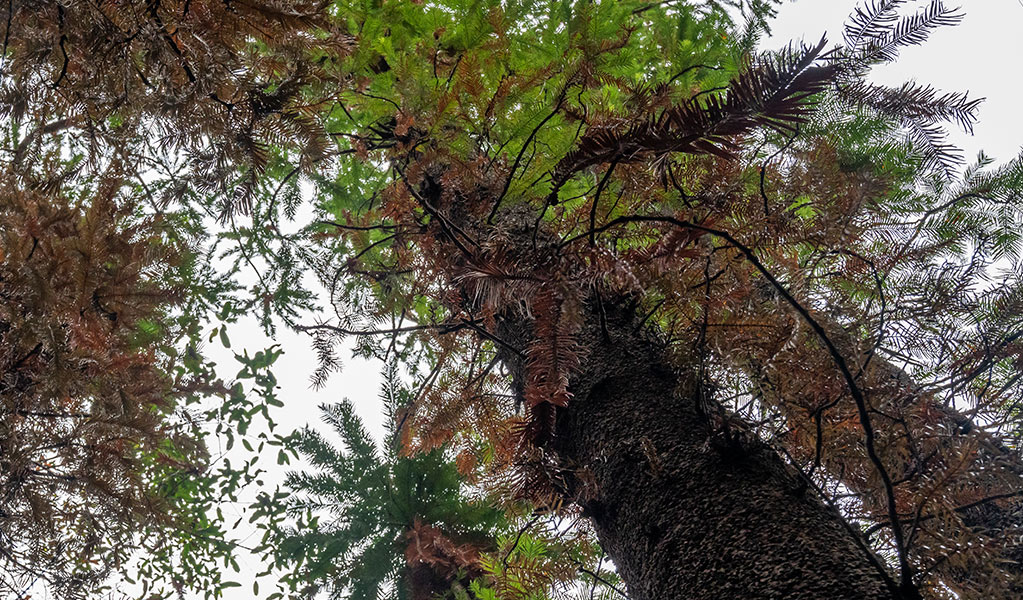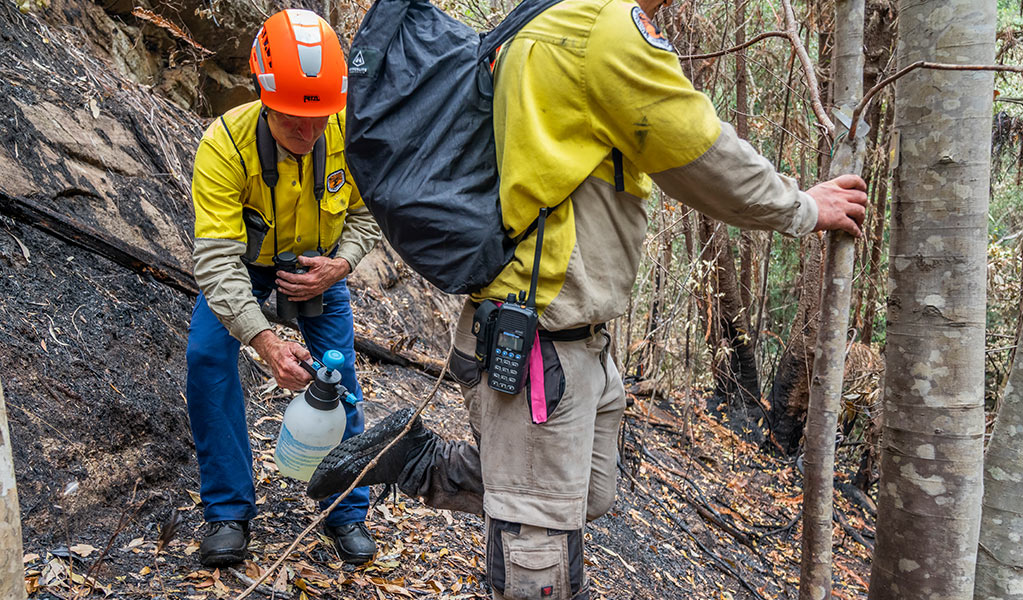Wollemi pine conservation project
With less than 50 adult trees remaining in the wild, the critically endangered Wollemi pine is at very high risk of extinction. NSW National Parks and Wildlife Service (NPWS) is working with the Saving our Species program and partners to ensure this rare species' survival.
Threats
The last remaining wild population of Wollemi pine is restricted to a single, isolated site in the Greater Blue Mountains, with only 46 adult trees and 43 juvenile trees. This makes this rare species extremely vulnerable to catastrophic events and at very high risk of extinction.
Along with frequent fire, the greatest threat to these extraordinary wild trees is from human disturbance. Unauthorised visitation to the wild site carries extremely high risk of trampling seedlings, damaging exposed roots and fragile soils, and introducing invasive weeds and pathogens like deadly Phytophthora cinnamomi or ‘root rot’.
Conservation
NSW National Parks and Wildlife Service (NPWS) has a targeted strategy for minimising threats and managing this species under the Saving our Species program. Access to the wild population is restricted to the minimum essential personnel undertaking the minimum essential management, research and monitoring activities.
Conservation activities include a translocation program which aims to increase the total size and geographic distribution of the wild population. Monitoring post-fire recovery of the wild trees, following the 2019-20 bushfires, is also ongoing.
Since its discovery, the Wollemi pine has been cloned by scientists and successfully grown around the world to help preserve the species via cultivation. A seed back and living collection of trees is maintained at the Australian Botanic Garden, Mount Annan. These support a range of research activities that benefit ongoing conservation and management of the wild population.
Wollemi pine propagation
From secret discovery to successful cultivation, this is the story of the Wollemi pine. Learn how scientists and botanical gardens are saving this ancient tree from extinction and bringing it to homes and gardens worldwide. Meet the dedicated scientists, researchers, and curators working to ensure the Wollemi pine's future. Discover their fascinating work — from propagation techniques to genetic research— and the passion that drives their efforts.
Wollemi pine translocation
Scientists are fighting to save the Wollemi pine. This fascinating video explores disease threats, translocation projects, and the long-term challenges faced by those dedicated to protecting this botanical treasure. The Wollemi pine is on the brink of extinction! With fewer than 50 trees left in the wild, this ancient species desperately needs our help. Learn about the threats it faces and how we can save it before it's too late.
How you can help
To help safeguard the remaining wild population of Wollemi pine, this sensitive site isn't accessible to the public. By staying away from the Wollemi pines in the wild, we can future proof their existence and Australia as their home.
The good news is that successful cultivation of these pines means you can safely see and enjoy this critically endangered species at locations across the world, from Australia's many botanic gardens to London's Kew Gardens, and even Disneyland in Tokyo!
You can also help with conservation of this ‘dinosaur tree’ by growing your own. They're available from many garden nurseries and are easy to keep in a pot or indoors.
To learn more about this rare and remarkable tree, and find a list of Australian locations where you can see the Wollemi pine safely, visit our Wollemi pine plant page.
Where to see Wollemi pines safely
Wollemi pine
Working together to save the Wollemi pine
Discover the Wollemi pine, a critically endangered tree, and the passionate people working together to save it. Meet the dedicated team saving the Wollemi pine. From park rangers to scientists and botanical experts, this video highlights the incredible collaboration behind the ongoing conservation of this ancient species. Learn how you can be part of the solution and help protect threatened species worldwide.
Our first Asset of Intergenerational Significance
In January 2021, the Wollemi pine site in the Blue Mountains World Heritage Area was declared as NSW’s first Asset of Intergenerational Significance (AIS).
This historic declaration recognises the global significance of the Wollemi pine. It provides the strongest legal protections and conservation management in NSW national parks, to ensure its survival for future generations.
You might also like
-
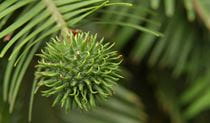
Wollemi pine
The Wollemi pine is one of the world's oldest and rarest trees. Only 46 adult trees and 43 juveniles remain in the wild. Belonging to a 200 million ye...
-
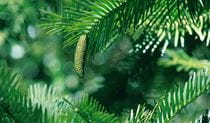
Assets of Intergenerational Significance (AIS)
Assets of Intergenerational Significance (AIS) are declared to bolster protections for an area with exceptional environmental or cultural values, like...
-
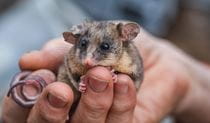
Protecting threatened species in parks
Around 84% of the approximately 900 threatened species in NSW are found in our national parks and reserves. Find out what we're doing to protect threa...
-
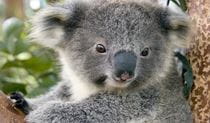
Saving our Species conservation program
Today, we're at risk of losing nearly 1000 of our state's native animals and plants. That's why the NSW Government established Saving our Species. It'...

